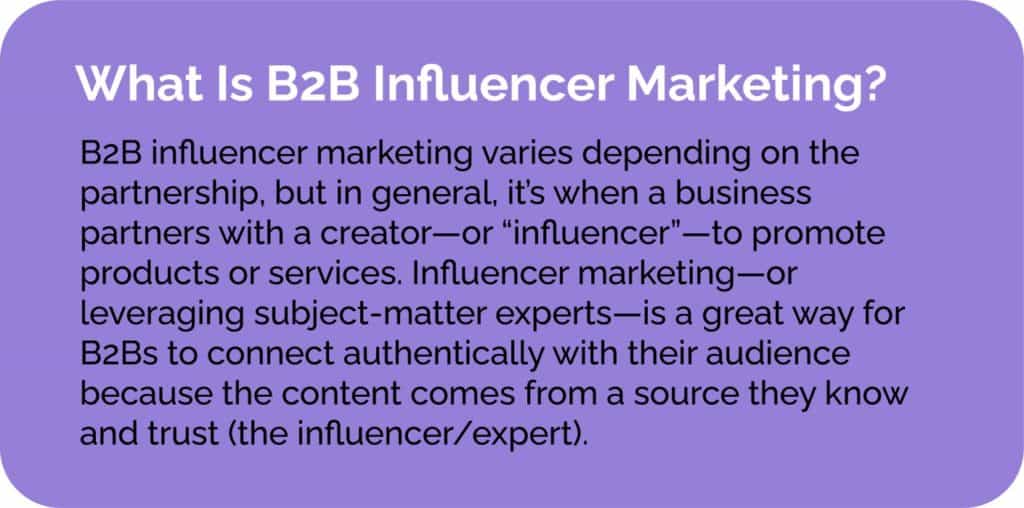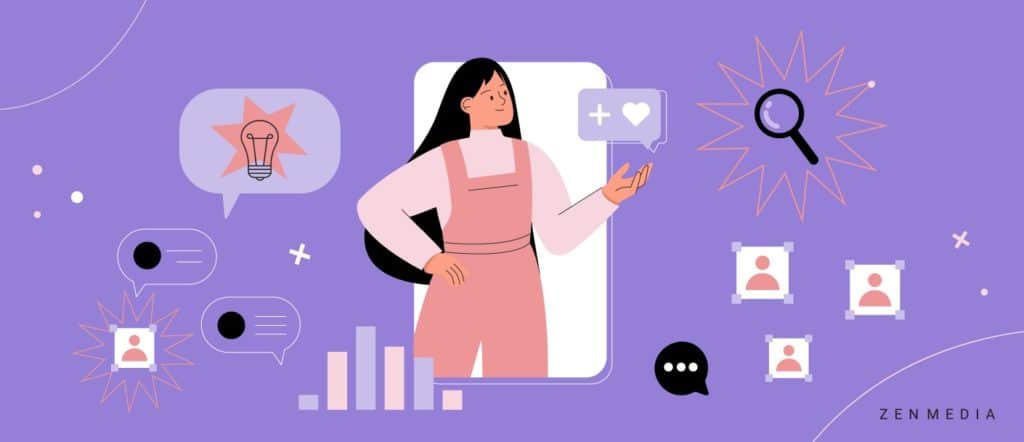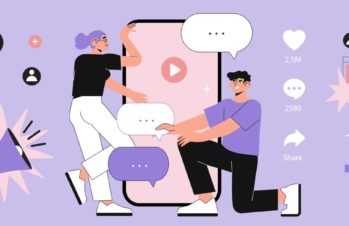From celebrity endorsements to unboxing videos, influencer marketing has evolved from a trendy B2C strategy that meant engaging with celebrities to one of the top five marketing channels, with 68% of marketers working with influencers in some capacity. Influencer marketing is expected to surpass $22 billion in revenue by the end of 2022—a figure even higher than social media marketing.
What Is B2B Influencer Marketing?
B2B influencer marketing varies depending on the partnership, but in general, it’s when a business partners with a creator—or “influencer”—to promote products or services. Influencer marketing—or leveraging subject-matter experts—is a great way for B2Bs to connect authentically with their audience because the content comes from a source they know and trust (the influencer/expert).
Anything from having an influencer beta test and review your new product to having them co-host a Q&A can be an effective B2B influencer marketing tactic. TopRank Marketing’s 2022 B2B Influencer Marketing Research Report shows that 86% of respondents said their B2B influencer marketing campaigns were either moderately or very successful.

Top B2B Influencer Marketing Trends
With 2022 ushering in the massive adoption of influencer marketing in the B2B space, 2023 is expected to offer some interesting opportunities for brands willing to take the leap into B2B influencer marketing.
1. The Rise of the Micro-Influencer
Gone are the days when brands needed a huge name—Jennifer Aniston on a television commercial—to have a successful influencer marketing campaign. While brands reported annual influencer marketing budgets of $50K to $500K+, companies don’t need to invest thousands of dollars into influencers with huge followings. Research shows that some of the best influencers (with the biggest conversion rates for brands) have a slightly smaller amount of followers (think under 100,000) with good engagement rates—and 41% of marketers report even working with nano-influencers (under 10K).
Micro-influencers are not only easier on the marketing budget, but they can be a driving force for authentic engagement and trust-building within a niche target audience. Think about it: a smaller influencer is much more likely to have more one-on-one interactions with their followers. This builds a sense of relationship and even exclusivity—the idea that you know about this great content creator and are on the ground floor, like discovering an indie band on the circuit years before they are picked up by a major label.
So what happens when that niche content creator makes a recommendation for your company—talks about the great experience they had with you or shares how your software is solving a problem for their business? Their audience listens. And more importantly, they remember.
Your target customer hears about your brand from them once in a LinkedIn post. Then, perhaps they see that influencer mention you again a few weeks later on Instagram. They search your brand (on social or a search engine) to find out more. “Hmm,” they think, and they close the browser/return to their newsfeed. Months later, they have a problem. “Oh, what about that company influencer so-and-so was talking about?”
An influencer’s recommendation, mention, or engagement with your brand isn’t meant to be a one-off thing. It is a part of a broader B2B marketing strategy—and to be effective, brands need to invest in relationships with the influencers best for their brands.
2. Long-Term Influencer Partnerships
Building a long-term relationship with the influencers you choose to partner with reduces overall costs and increases opportunities for referrals and stability in results. It may be enticing to spread your budget across as many influencers as possible to get a broader reach. But remember, it’s better to have 10 engaged people in a room than 100 despondent ones. If you invest in a handful of long-term influencer relationships, you can develop deeper relationships with them, and, in turn, their audiences. The longevity of a relationship means the longevity of data points, so estimating and expecting results becomes much more accurate when working with a long-term influencer partner.
The overhead of identifying, selecting, and onboarding new influencers is costly—yet another reason long-term partnerships are beneficial. Additionally, brands and influencers can enter into “always-on” campaigns. An always-on campaign is exactly what it sounds like: a B2B influencer marketing campaign that never ends. It costs money to end a campaign and begin anew. Creating long-lasting relationships with internal and external influencers builds trust and increases campaign effectiveness.
3. Internal Influencers
Influencers are traditionally thought of as external to an organization, but employee and executive influencers—and the perception of your brand internally—is just as important as your external brand perception. Internal influencers are the people who other employees turn to—those who are approachable and respected. Company leaders don’t often get to choose who the influencers are in their workplace. Sure, they can promote certain folks, but you can’t force a workplace culture to build relationships with a certain person. Keeping employees happy, engaged, and believing in the company’s core values is crucial because you never know which of your employees might be the thought leader amongst your teams. Internal influencers having a positive relationship with the brand also keeps costs down by raising the retention rate and simultaneously boosting brand credibility and authenticity—even externally.
4. User-Generated Content
Brands can leverage user-generated content (UGC) or influencer-generated content by repurposing it over a multichannel campaign. Have a fantastic TikTok repping your brand? Share it on LinkedIn. And although paid ads aren’t usually on the same topic as influencer marketing, brands can use high-quality, authentic content from users and influencers to create advertisements that will actually convert.
Brands can even collaborate with an influencer to get more UGC. Running a contest or seasonal campaign and asking users to contribute using the brand’s hashtag is a great way to source and congregate a massive amount of UGC. On top of that, 31% of consumers say advertisements featuring UGC are more memorable than traditional ads.
Related reading: How Your B2B Can Leverage User-Generated Content To Build Credibility
5. Video Content > Everything
Video marketing only continues to rise in popularity. Focusing your influencer efforts on producing video content is guaranteed to increase your engagement and, ultimately, your ROI. 95% of buyers say watching videos greatly influences their purchase decisions, indicating that they are more likely to buy a product after watching a video. Purchase journeys in B2B are long, so you can’t always count on an immediate sale, but the fact is that people are also more likely to share video content than other forms of content. So, even if there’s no immediate movement on your bottom line, your content could be getting shared on dark social, contributing to the 27 touchpoints a buyer needs to convert to a customer.
In 2023, B2Bs need to be ready to try influencer marketing, if they haven’t already. Industry thought leaders, respected innovators…who does your audience listen to? Find those creators, leaders, and influencers and build partnerships with them. Create mutually beneficial relationships that prioritize genuine communication and aligned values. If you’d like to try out one of these B2B influencer marketing trends, let’s chat. We’d love to hear from you.




